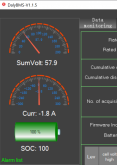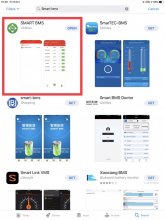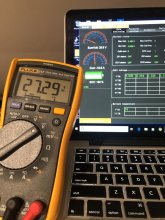FilterGuy
Solar Engineering Consultant - EG4 and Consumers
Of course one added challenge to the Chargery BMS is adding your relay cut offs.
One thing I like to do with the Chargery is to use the relay signals to turn the loads and chargers on and off rather than try to use relays to directly cut the current. Even if you can only do this on the inverter, it can be a big improvement over trying to use a relay. Below is a design I did for someone that uses a Chargery BMS but no relays.

This was for a van conversion, so it is a bit more complicated than a stationary system where you don't have the DC loads or Alternator charging.






